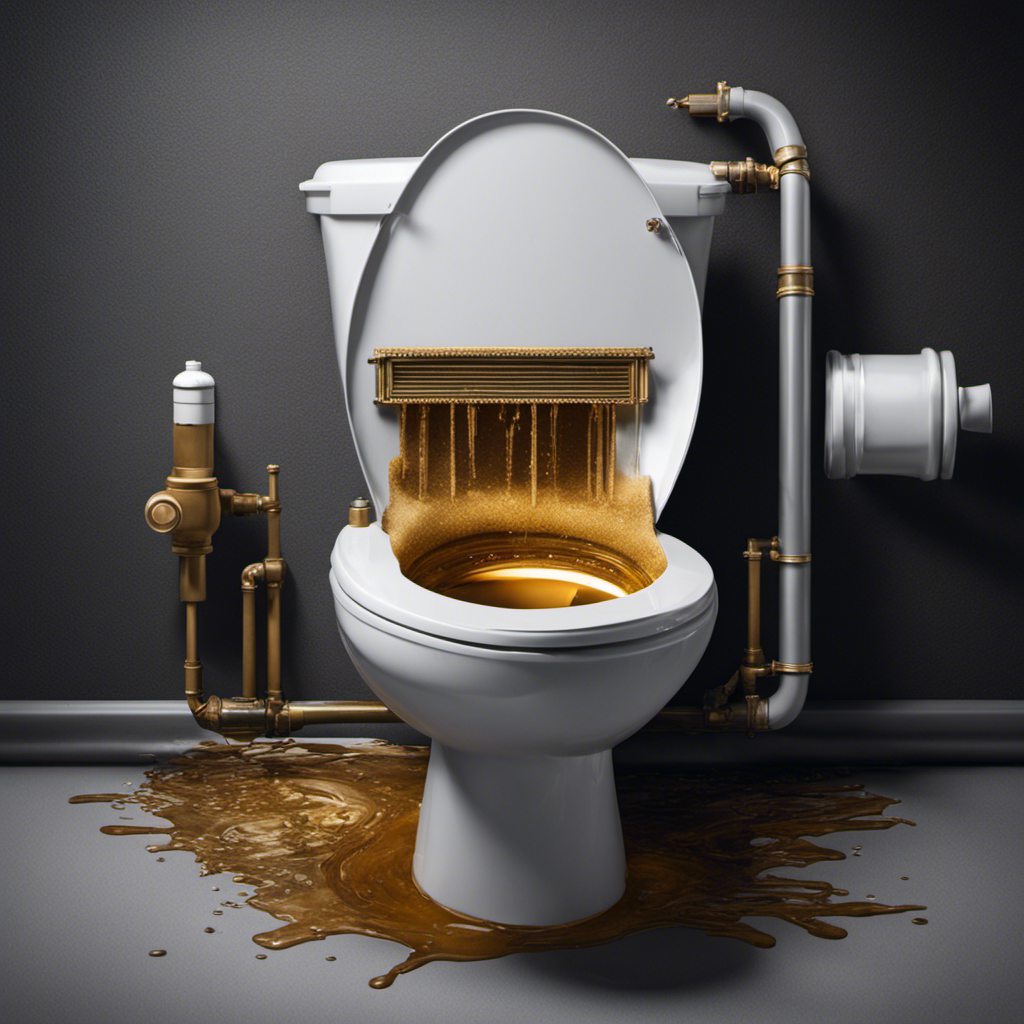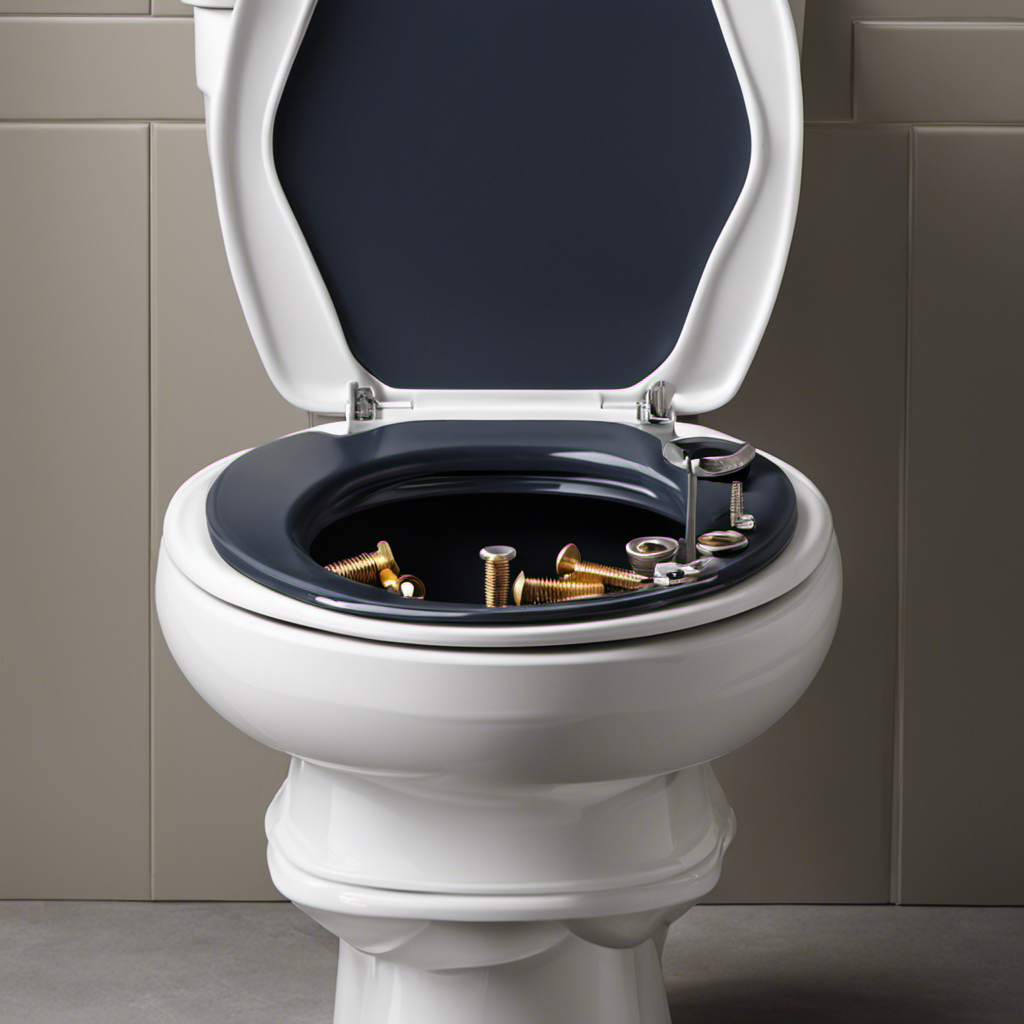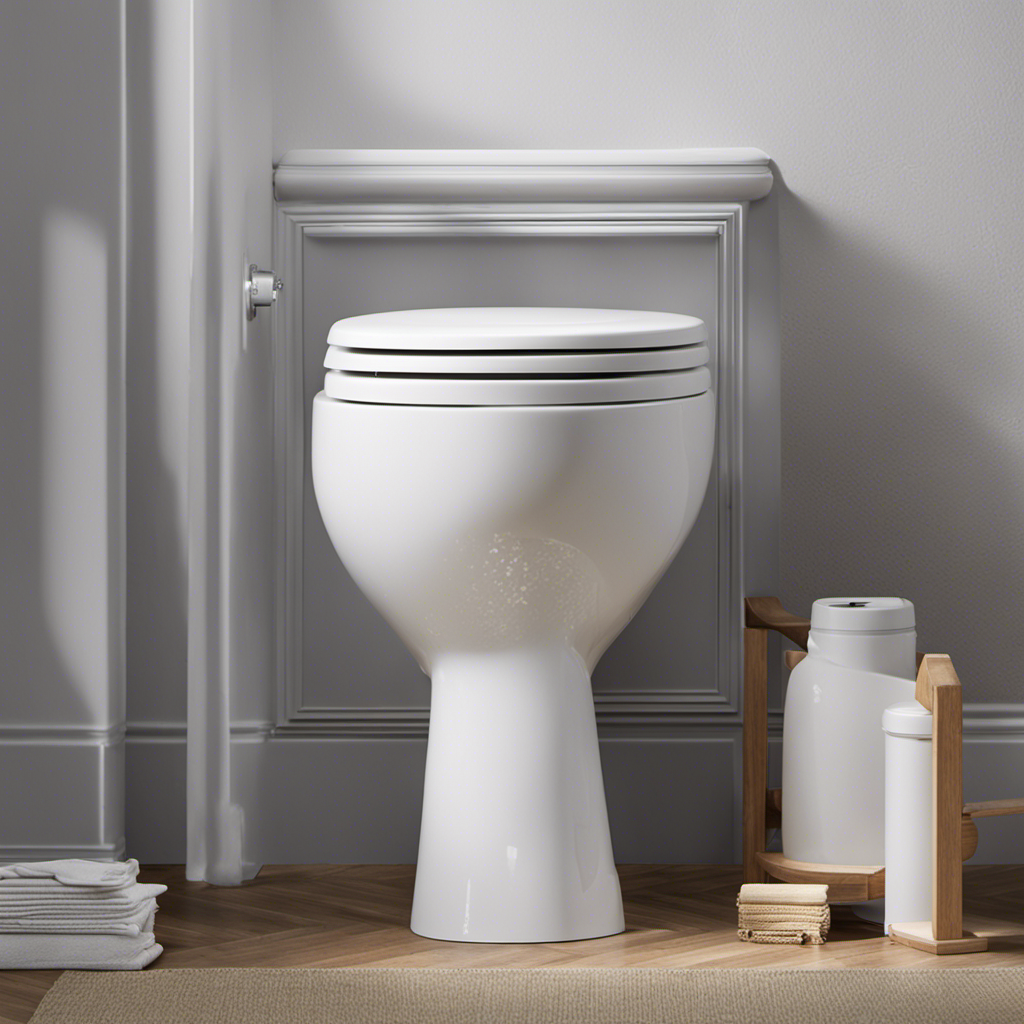I’ve always wondered why my toilet keeps running on and off, interrupting my peace and quiet. After doing some research, I’ve discovered that there are a few common causes for this annoying issue.
In this article, I’ll explain how to identify a running toilet and provide troubleshooting steps to stop it from running continuously. We’ll also explore the role of the toilet flapper and share some tips for preventing your toilet from constantly running.
Key Takeaways
- A faulty flapper is a common cause of a running toilet.
- Identifying a running toilet can be done by checking the water level, listening for continuous running, observing water flow, and noticing increased water bills.
- Troubleshooting steps to stop a running toilet include checking the flapper valve, turning off the water supply, cleaning or replacing the flapper valve, and adjusting water pressure.
- Regular inspection and maintenance of the toilet flapper are important to prevent water waste and ensure proper functioning.
Common Causes of Toilet Running
One of the most common causes of a toilet running on and off is a faulty flapper. The flapper is a rubber valve that sits at the bottom of the toilet tank and controls the flow of water into the bowl. If the flapper is worn out or damaged, it can create a leak, causing the toilet to continuously run.
This can be identified by the sound of running water even when the toilet is not in use. Not only is a running toilet annoying, but it can also have a significant impact on your water bill. A running toilet can waste hundreds of gallons of water every day, leading to higher water bills.
It is important to fix the faulty flapper promptly to prevent any further water wastage and reduce your expenses.
How to Identify a Running Toilet
To identify a running toilet, you can start by checking the water level in the tank. Here are some steps to help you identify if your toilet is running:
-
Check the water level: If the water level in the tank is too high or too low, it could indicate a running toilet.
-
Listen for continuous running: If you hear a constant hissing or running sound even when the toilet is not in use, it is a sign of a running toilet.
-
Observe the water flow: If the water in the toilet bowl keeps moving or there are small ripples, it means your toilet is running.
Identifying a running toilet is important because it can result in a higher water bill and potential toilet repair costs. Once you have identified that your toilet is running, you can move on to troubleshooting steps to stop it.
Troubleshooting Steps to Stop a Running Toilet
Check if the flapper valve in your toilet tank is properly sealing the water flow. If you’re experiencing a running toilet, it could be due to a faulty flapper valve.
To troubleshoot this issue, start by turning off the water supply to the toilet. Then, remove the tank lid and inspect the flapper valve. Look for any signs of damage or sediment buildup that could prevent it from creating a proper seal. If necessary, clean or replace the flapper valve.
Additionally, ensure that the water pressure in the toilet tank is set correctly. High water pressure can cause the flapper valve to not close properly, resulting in continuous running.
The Role of Toilet Flapper in Continuous Running
Make sure you regularly inspect the flapper valve in your toilet tank to prevent continuous running. The toilet flapper is a crucial component that controls the flow of water from the tank to the bowl. Over time, it can wear out or become faulty, leading to a running toilet. Here are some signs that indicate your toilet flapper may need maintenance:
- Water continuously running into the bowl
- Weak flush or incomplete flush
- Phantom flushes (when the toilet randomly flushes without anyone using it)
If you notice any of these signs, it’s important to address the issue promptly to prevent water waste and potential damage to your toilet. Regularly checking and maintaining the flapper valve can help ensure proper functioning and prevent continuous running. By taking care of this small but important component, you can avoid the frustration and inconvenience of a running toilet.
Now, let’s move on to some tips for preventing your toilet from running on and off.
Tips for Preventing Toilet From Running on and off
One effective way to prevent your toilet from constantly running is by adjusting the water level in the tank. When the water level is set too high, it can cause the float mechanism to malfunction and result in the toilet running continuously.
To adjust the water level, locate the water level adjustment screw or valve on the fill valve assembly. Turn the screw or valve clockwise to lower the water level and counterclockwise to raise it. It’s important to find the right balance so that the tank fills adequately after each flush, but not too much that it causes the toilet to run.
Conclusion
After investigating the common causes and troubleshooting steps to stop a running toilet, it is clear that the toilet flapper plays a crucial role in this issue.
However, there may be more to the story. It is worth delving deeper into the theory that water pressure variations could also contribute to a toilet running on and off.
By understanding the truth behind this theory, we can gain a deeper understanding of how to prevent a toilet from running and ensure a properly functioning bathroom.










